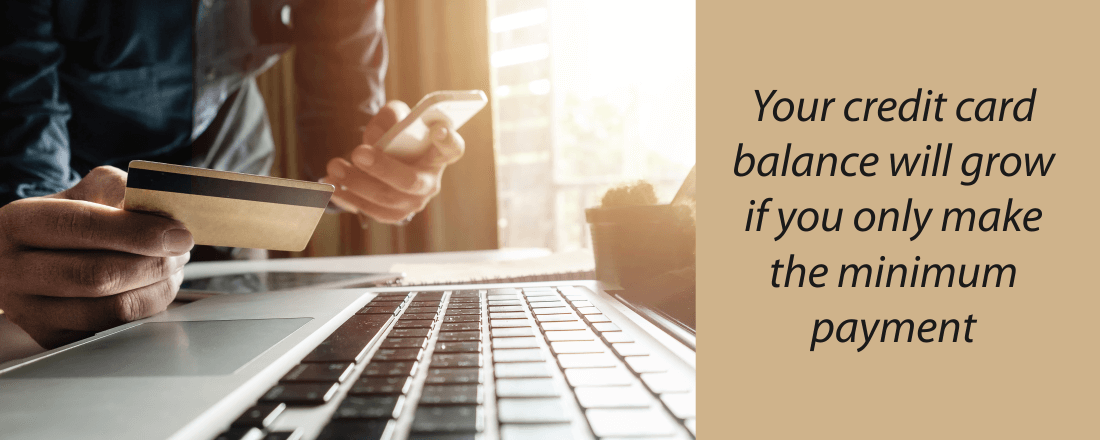
Far too many consumers have credit card balances. This isn’t something to be proud of as a credit card balance is another term for having debt. Remember, when charging items on a credit card, those expenditures must be paid back in full.
Let’s explore some of the ins and outs of credit card balances, including what they are and how they can snowball into a major financial problem that affects your life for years to come.
What Is a Credit Card Balance?
A credit card balance is simply the sum of all the expenditures you’ve charged on the card in a given period of time. Credit card issuers typically send consumers a bill in 30 day periods of time. Within that timeframe, if you charged $100 on clothing, $200 at the grocery store and $5 on a latte, your balance will be $305 (100 + 200 + 5).
Typically, each 30 day period is called a billing cycle. Let’s say your cycle starts and ends around the 15th of every month. September 15 to October 15 could be one cycle, for example. For this cycle, the balance due date may be a few weeks later, such as November 1 or November 7. But an expenditure made on October 16 (one day after the cycle ended on October 15), would be included in the next cycle (October 16 to November 16) and the bill wouldn’t be due until December.
How Does a Credit Card Balance Grow?
A credit card balance comes to light when you pay any amount less than the total balance. If your total balance is $305 and you pay $300, you’ll have a $5 balance. You are supposed to pay off the entire balance in full every month. This is very different from the “minimum payment.” On your credit card statement, you’ll also see a minimum payment amount which is listed below the balance on your credit card statement. The minimum payment is merely a small percentage of the balance and is low enough that it will keep you in debt for years, depending on how big the balance is. That’s because interest charges accrue any time you pay less than the entire full balance. The interest rate on a credit card could be as high as 25%. Think about it: the credit card issuer is now loaning you money and they want to be compensated for that loan. The minimum payment is simply the least amount of money you can pay on the balance to avoid defaulting on your account and to prevent late fees from kicking in.
How Can I Reduce My Credit Card Balance?
In order to reduce your credit card balance, you need to apply as much money as possible towards the balance. If you can’t pay off the entire balance, what is the next highest amount of money you can afford? This is the key question to ask yourself.
Using the minimum payment as a guideline, even if you can only pay $10 or $15 more than the minimum, that will still push you closer to paying off the entire balance. Every dollar counts.
The other way to reduce your credit card balance is by transferring it to another credit card that has a zero percent interest rate. This is called a balance transfer. It involves opening up a completely new credit card. This new card, called a
Remember, the zero percent rate does not apply to everyday purchases. Only use the balance transfer card for one purpose: transferring the balance. There may also be a fee to transfer the balance of three percent. If you conduct thorough research, you may be able to find a balance transfer card that charges no fee.
How Does a Credit Card Balance Affect My Credit Score?
Leaving a balance on a credit card will lower your credit score. A high credit score is crucial if you’re in the market for a mortgage or car loan. The bank wants to see that you’re responsible with money. If you have a high credit score, the interest rate you pay on the mortgage or car loan will be lower.
Remember, the largest component of the credit score is your utilization ratio. This is a measure of how much credit card debt you’re in. A higher utilization ratio will lower the score.
Let’s say your credit card balance is $5,000, but your credit limit (the maximum amount of money you can spend on the card) is $10,000. Your utilization ratio would be 50% (5,000 divided by 10,000).
That’s a rather high utilization ratio. If you paid off just $2,000 of that $5,000 balance, you would then only have credit card debt of $3,000. Your utilization ratio would decrease to just 30% (3,000 divided by 10,000).
What Does a Credit Card Balance Mean for My Spending Habits?
Leaving a balance on a credit card limits how much you can use the credit card. For example, if your credit card has a $10,000 credit limit – as explained in the example above – and you have a $5,000 balance – your remaining credit limit is $5,000 ($10,000 – $5,000).
For each dollar paid off, you’ll regain a dollar in usable credit limit. But if you are relying on this credit card to pay for necessities, it is important to keep these numbers in mind. A $10,000 credit limit, in this example, is only in play if you hold a zero balance on the card.


